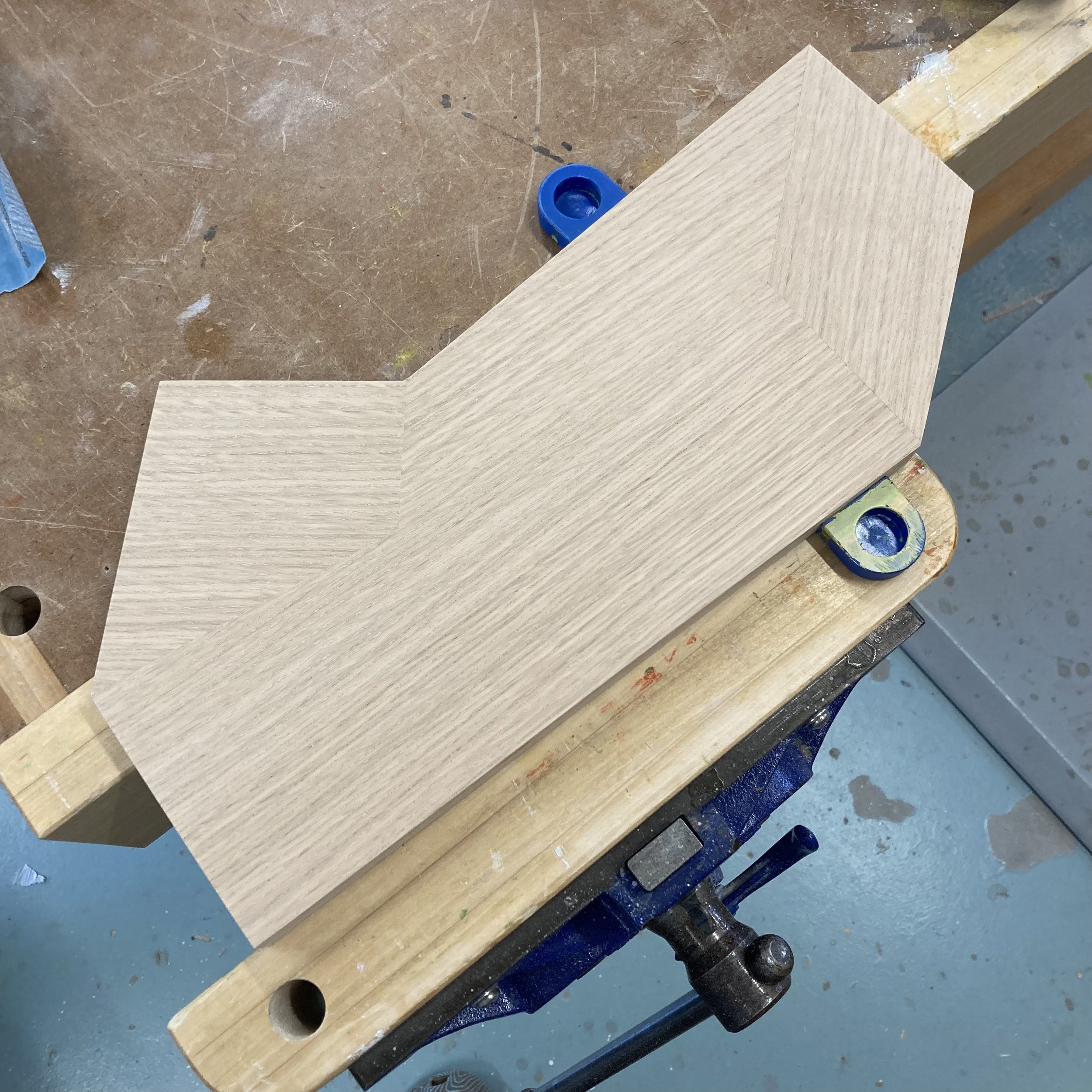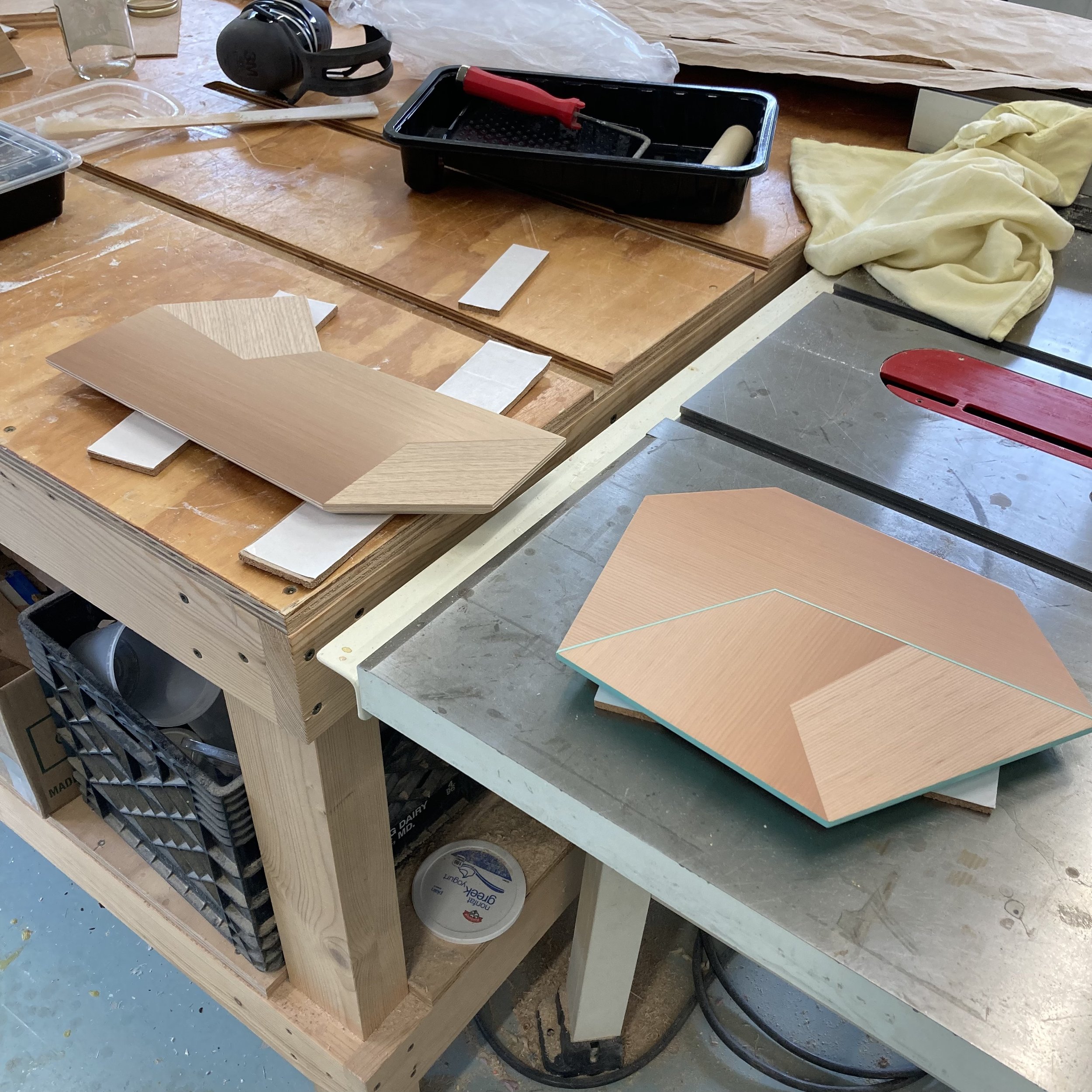Trevor Toney
In Conversation with Trevor Toney: “Creating perspectives guides us to the realization that we are not the center, but just minor actors.”
Easthaus:
Hi Trevor, it is a blessing that we are able to exhibit your work here at Easthaus alongside Jenna Girolamo in the duo show, Seeing Through a Window. Thank you for sitting down (at your personal computer) to conduct an online interview with us over here at Easthaus, it is very gracious. Without delay let's get started!
Trevor Toney:
Thank you very much for having me! I’m honored to be part of this new endeavor!
EH:
To start out I think it would be great if we can get some insight into your workspace. Studios are often thought of as very solitary places but for other artists it is super communal. Having a woodshop allows you to maybe cater to both. So, where would you say you land on that spectrum of an isolated maker space vs. an open door studio? How best do you work? What gets you motivated or demotivated?
I’m very fortunate to have my own workshop, built by me and some friends about 8 years ago. Before that I was working in my basement which was not ideal for some of the larger commission work that I do. I’m definitely a solitary worker, my process for most things is very methodical and I really need to be in my head or else I feel that I’m making mistakes and get all flustered. I enjoy opening my shop up to visitors but can’t really work to my fullest when I have too many interruptions or distractions. As far as how I work and motivation, I find just getting to my space fires me up most of the time. I usually get into my shop daily, and find working creates my motivation.
TT:
EH:
I brought up your maker space but I think it would help to open up dialogue about how and what you make. Where do you ground yourself in your practice? When do you know you have an idea that you will take further? How would you classify yourself and your process; are you a sculptor, woodworker, painter, a woodworker who sculpts and then paints? Tell us a little bit about your process and who you identify as.
I’m a doodler, haha. Occasionally I’ll doodle something and immediately make it. Other times, if I think a sketch has potential but don’t feel an urge to make it as is, I’ll tape it to some cabinets near my workbench and live and/or tinker with it over time or let it grow on me. Sometimes these taped up drawings will morph into a final draft within a few days, sometimes a few weeks or months. What I decide to make is purely based on if I think it’s “cool” or not. If I look at a drawing and think “hell yeah” then I’ll make it.
The tricky part then is to make the piece and have the same reaction. As far as my identity or classification I guess I’d go with woodworker and artist. I really enjoy making the objects that I add acrylic paint to and that comes from my cabinet making and furniture making background. I’m no longer interested in making furniture but like the furniture techniques that I employ to make my art, so that coupled with my love of color gives me the parameters that I most enjoy working in.
TT:
The Doodler is a great moniker to have. I am often trying to find moments in your work to unveil glimpses into where your inspiration comes from. In the exhibition text, relating to your work, I mentioned architectural blueprints, trees in the natural landscape, optical illusions, like the Necker Cube, all as possible influences for you. What have you found that brings you the most inspiration in the studio? Who influences you? A similar question I asked Jenna, who do you have lodged in your artistic family tree? I would be interested to know who you feel your historical and contemporary colleagues are?
EH:
I don’t think I have any, at least in the sense that I think you mean. I’m sure I’ve gleaned things from my surroundings, experiences, etc. and there is plenty of art I enjoy but nothing jumps out as an influence. I think we are all a sum of the life we’ve led and the things we’ve experienced and I try to let that part of me take over when I create. I try not to think at all when I’m sketching and because of this I feel that whatever comes out is an expression of who I am, which is the most important thing to me. It’s very meditative and I try to let go of any outside interference while letting new ideas emerge. I then let that idea grow and become the finished piece. It’s taoist in a way, effortless effort.
TT:
EH:
It’s interesting to hear you put “active” influence to the side while its very clearly use line and form as ways to hint towards perspectives. In thinking about the long history that linear perspective has played since its invention during the Italian Renaissance, how do you view perspective today? What do you think Filippo Brunelleschi, the labeled pioneer of linear perspective, would say about your use of perspective? What have you gained by disrupting the viewer's expectation of a traditional art principle?
TT:
There is more to existence than what we see or can conceive and I think creating perspectives that vary from our understanding suggests that. I think it takes our limited comprehension out of the equation and guides us to the realization that we are not the center, but just minor actors and by extension we should act accordingly. I also enjoy the formal aspect of playing with perspective and pushing how “off” it can be while still being recognizable, essentially trying to create discord and harmony within the same piece.
EH:
Furthering along the lines of the last question, and a question that many artists love (or fear) to answer and may not get asked too often is about the label of the artist. I am curious to hear about your philosophy about art and the artist lifestyle. What does it mean to you to be an artist? What calls you back to the studio after a long day?
TT:
To me an artist is anyone that genuinely portrays themselves in what they do. It’s got nothing to do with skill, materials, process, pedigree, etc. If you care enough to pour yourself into something, you’re an artist. I go back to my studio everyday because it’s my job, I like creating things, and that’s where my stuff is.
EH:
Trevor, thank you for your time interviewing for your duo exhibition, Seeing Through a Window, on view until September 30th here at Easthaus with Jenna Girolamo. For our closing remarks we welcome you to plug any ongoing projects, events, upcoming thoughts, inspirational quotes, studio photos; anything that you would like to share with the Easthaus and greater art community.
TT:
Thank you very much for the platform and I’m so excited to be a part of this! Can’t wait to see the show! I’m working on some ideas for a public art commission for a hospital in Worcester, MA that should be fun and have a bunch of work in The Enormous Tiny Art Show at Nahcotta in Portsmouth, NH which opens September 6th with a reception from 5-8PM. I’ll be there if anyone wants to hang out!



